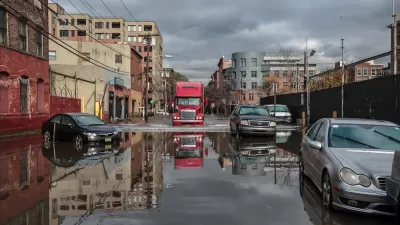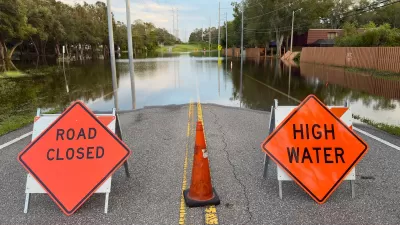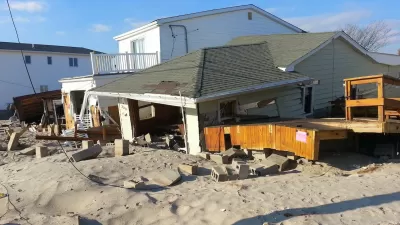Justin Gillis outlines some harsh criticisms of disaster response efforts that rebuild without rethinking – and how much it's costing taxpayers across the country.
In the wake of Hurricane Sandy, some $30 billion will be issued in disaster relief and assistance to help return communities to stable, working, livable condition. Yet the critical moment of a disaster response is not in the rebuilding of a place but the changes it undertakes to ease the blow the next time around.
As Gillis points out, "Since 1979, nearly a dozen hurricanes and large storms have rolled in and knocked down houses, chewed up sewers and water pipes and hurled sand onto the roads." And yet homeowners across the country continue to flock to the shores, rebuilding entire communities just as they were before, invariably at enormous taxpayer expense.
Partly to blame are generous subsidies for flood insurance and new infrastructure – the Stafford Act provides federal dollars for 75 percent of repairs to storm-damaged roads and utilities. Perhaps just as much to blame are attitudes toward disaster planning.
“We’re Americans, damn it,” quips North Carolina Geologist Robert S. Young, capturing the response strategy in many communities. “Retreat is a dirty word.”
Meanwhile, a number of Vermont towns that fortified inadequate culverts after Hurricane Irene last year are still struggling for reimbursement from FEMA.
In some communities, resistance to change is strong, and solutions are scarce. “The best thing that could possibly come out of Sandy is if the political establishment was willing to say, ‘Let’s have a conversation about how we do this differently the next time,’ ” said Young. “We need to identify those areas — in advance — that it no longer makes sense to rebuild.”
FULL STORY: As Coasts Rebuild and U.S. Pays, Repeatedly, the Critics Ask Why

Planetizen Federal Action Tracker
A weekly monitor of how Trump’s orders and actions are impacting planners and planning in America.

Maui's Vacation Rental Debate Turns Ugly
Verbal attacks, misinformation campaigns and fistfights plague a high-stakes debate to convert thousands of vacation rentals into long-term housing.

Restaurant Patios Were a Pandemic Win — Why Were They so Hard to Keep?
Social distancing requirements and changes in travel patterns prompted cities to pilot new uses for street and sidewalk space. Then it got complicated.

In California Battle of Housing vs. Environment, Housing Just Won
A new state law significantly limits the power of CEQA, an environmental review law that served as a powerful tool for blocking new development.

Boulder Eliminates Parking Minimums Citywide
Officials estimate the cost of building a single underground parking space at up to $100,000.

Orange County, Florida Adopts Largest US “Sprawl Repair” Code
The ‘Orange Code’ seeks to rectify decades of sprawl-inducing, car-oriented development.
Urban Design for Planners 1: Software Tools
This six-course series explores essential urban design concepts using open source software and equips planners with the tools they need to participate fully in the urban design process.
Planning for Universal Design
Learn the tools for implementing Universal Design in planning regulations.
Heyer Gruel & Associates PA
JM Goldson LLC
Custer County Colorado
City of Camden Redevelopment Agency
City of Astoria
Transportation Research & Education Center (TREC) at Portland State University
Jefferson Parish Government
Camden Redevelopment Agency
City of Claremont





























